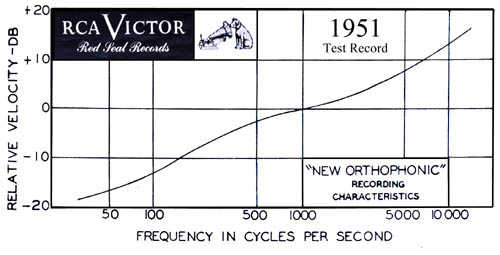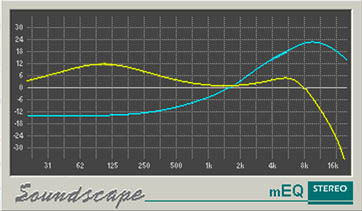RESTORATION 101 ã 2002 by Eddie Ciletti
The restoration engineerís idea of heaven is being provided with a collectorís choice of record pressings and tapes, or better yet, pouring through a vault to find a lost treasure. But when handed a one-off acetate disc or cassette tape to salvage, the restoration process shifts toward that of Forensics, improving intelligibility is a more realistic goal than travelling through time to recover nuance.
ITíS ARCHEOLOGICAL, DIG?
While the focus of this article is technique, the extent to which tools are required is determined by budget and the amount of work to be done. Of course Sonic Solutionís NoNoise comes to mind as does Cedarís Series X products that I had the good fortune to review a few years ago.
Knowing what Cedar can do at $6k per box, I was curious to know what was possible at the other end of the spectrum. Cool Edit Pro is one product that I frequently use to manipulate audio files. At $249, it is quite the bargain as a multitrack recorder / editor that includes an assortment of plug-ins, some restoration specific. Iíve also been playing with a Beta Version of DART PRO XP. At $399, itís a bit more expensive than Cool Edit, is 2-track only but does focus exclusively on restoration.
Two Sound sample series are provided. Bell Sound is a Microcassette Recording and Dakota was a video recording with poor micing technique.
TECHNIQUES
Just like a live session, itís important to start with the best possible source material. I have chosen some rather extreme examples ó 78RPM records and a micro-cassette ó to show how to prepare the material so that any soft- or hard-ware solution can do a better job.

Figure-1 |
|
The graphic in Figure-1 originally started life detailing only the relationship of a 1-mil stylus to a "microgroove" record, the standard for mono LPs and 45-RPM disc from 1949 until the introduction of Stereo and color TV in 1957. The image was then augmented to show three styli, sitting in the groove from front to rear, each stylus designated by its Radius at the point of contact. From front to rear: yellow (.7mil, stereo), pink (1mil, mono LP and 45-RPM) and blue (2.7-mil, 78 RPM). At that time the only stylus shape option was conical (round). Later, elliptical and other shapes improved high frequency tracking, lowered distortion and reduced groove wear.SURFING FOR TIPS
Typically Stanton phono cartridges have the most stylus options (available at www.kabusa.com and www.needledoctor.com). Shure, at www.shure.com, has one stylus for 78 RPM playback. Before Digital Signal Processing, I chose smaller styli to play deeper into the groove away from the major ticks and pops on the surface. The official tip radius is 3-mil but the actual size for best performance will be determined by the disc material, condition and time period.
HIGH NOTE: Ticks and Pops are primarily a surface flaw that requires a noise removal technique that responds to impulse. For the purpose of this article, "surface noise" is defined as being generated from the material used to press the disc.
After 1949 many "78s" were pressed from "Vinylite" and cut with the same stylus used for LPs and 45s only with a deeper groove. For these discs a smaller tip radius will yield better high frequency response, less ticks and pops, and less distortion (by playing the groove in an area not damaged by previous and repeated play).
Pre-1949 records are made from Shellac, a grainy substance before wear is factored in. While smaller and / or elliptical styli can better trace the groove at high frequencies, the enhanced resolution also reveals flaws in that disc compound. The optimum stylus choice is one that allows the De-Crackling algorithm the most leeway. Too small and the wash of noise will leave little wiggle room for the DSP.
LOW NOTE: If the bottom-of-groove radius is larger than the Tip Radius the stylus will no longer be supported by the groove walls, meandering in the gutter and generating a "swishy" sound.
EEK-UThe final issue concerns equalization. Prior to the introduction of the LP and 45, record manufacturers used EQ to optimize the disc to their own standards. The response curve in Figure-2 dates back to 1951 when RCA referred to it as the "New Orthophonic Recording Characteristics." It is essentially the RIAA curve ó a treble boost and bass cut are applied during record, then a reciprocal curve on playback reduces noise and improves tracking (respectively). 78-RPM records should be played FLAT, requiring a preamp with that capability. This is as important to the sound of the record as it is useful to the Click Reduction algorithm, allowing transient ticks to be more easily identified. It is better to apply EQ after restoration is complete.
WHATíS CRACKLINí?
Removing ticks and pops is easy. How much further to go is a matter of taste, time, tools and money. If the disk condition and transfer were really good, Cedarís Decrackler takes less than a minute to optimize. Decrakling is a more difficult task if "record grunge" is not so far above the program material. The RIAA curve increases low frequency rumble that can modulate the noise reduction process, a percolating or bubbling kind of sound that is almost like fluttering clarinets.
In terms of useable frequency response above 5 kHz, "que sera sera." A good pressing may reveal useful information that might otherwise be masked by surface noise. A funky pressing requires greater patience and larger selection of styli. Choose a tip radius that moves the noise spectrum outside of the useable response. That noise can either be tolerated, processed or filtered. Iím content when a pre-1949 78-RPM recording sounds like a noisy analog tape.
For more info on the records transferred using Cedar, see the Sidebar "Art Lund: Crooner."
THE ULTIMATE TAPE HISS
Several years ago ( circa '96 ~ '98 ) I went to a Christmas Party at Nola Studios, way up in the penthouse of the Steinway building on west 57th street. Armed with a micro-cassette recorder, I was hoping to capture stories from the various Bell Sound Alumni who had gathered there. Back in the 60ís, Bell Sound was one of the hot independent studios. Many of the Burt Bacharach / Dione Warwick recordings were made there. The Stones, The Loviní Spoonful and even Motown artists also recorded at Bell Sound.
Alas, one member of the crew, Harry "Hesh" Yarmark, is no longer with us as of Summer 2002. His first session as recording engineer began with Little Anthony and the Imperials (Tears on My Pillow). Harry also recorded Peter, Paul and Mary, The Four Seasons, Laura Nyro, Ritchie Havens, Paul Butterfield, The Five Stairsteps (Ooh Child) and The Toys (Loverís Concerto). After leaving Bell, his first Session at Allegro Studios was with Johnny Maestro and the Brooklyn Bridge. The song was "The Worst That Could Happen." Hesh was last seen behind the board at ABC mixing 20 / 20.
So, Harryís gone and all Iíve got is this micro-cassette. I never paid much attention to the format except that, as is the case with all analog media, faster is better for high frequency response. With the azimuth wandering all over the place and the electronics lacking headroom, this tape redefined the term "challenge." I decided to wind the micro-cassette tape into a new full-sized cassette shell hoping for better playback.
THEREíS A SNAKE IN MY EARS
As expected, the tape played backwards with one surprise, at double speed. Turns out that "fast" for a micro-cassette is 15/16-IPS! I made a quick half-speed modification to one of several "spare" cassette decks. While preparing for transfer, it was difficult to hear enough high frequency detail to optimize the azimuth so an inverse EQ curve was applied as shown in Figure-3 to improve intelligibility and reduce low- to mid-frequency muck. (This basically un-did the normal bias EQ curve inherent to the machine.) Still, the azimuth required tweaking about every seven to ten minutes as is the nature of the original beastly recording. The transfer was made to an Alesis Masterlink, samples of which were dumped into a workstation for reversal, analysis and noise tests.
The improved transport and electronics made a huge difference in the recovered signal. The EQ curve gave the De-Hiss algorithm plenty to work with. Afterwards, a modified reciprocal curve restored the warmth that had been removed during the transfer. I tried both Cool Edit Pro and Dart Pro XP. CEP V2 was released earlier this year and did a remarkable job, especially after sampling the noise in a section where there was no dialog. Dart Pro was still in Beta when tested, just before the first release, which did not include their new noise reduction algorithm. I will post the before and after files.Bell Sound Raw Import with Emphasis EQ
Bell Sound DART PRO Noise Reduction Test with De-Emphasis EQ
Bell Sound CEP Noise Reduction Test with De-Emphasis EQAlso included below is a clean up job I did for a local county project. Video equipment was used to record and edit the program material. Background noise includes hum, sqweaks, poor mic'ing and obvious editing clicks. In the original, the sound from voice to voice was very inconsistent. Some voices were recorded close and others far, as in the worst-case example.
Again, I used a very minimal amount of signal processing to improve intelligibility during transfer. If you think the Final Version is a little severe, it is, but the project is intended for playback in cars only and as such, while the background noise was not an issue, clarity was important. I think car audio is a major challenge so the project was skewed for maximum intelligibility.
Dakota Raw Import
Dakota Final VersionRIDING THE RANGE
The beauty of dedicated hardware is real time control and live, on-the-fly tweaking. Two years later the 78-RPM restoration still holds up, CEDAR really delivered the goods and made the job quick and easy. For the micro-cassette, software de-noising was not real time although it was possible to audition before processing. I am amazed that such affordable tools like Cool Edit Pro and Dart Pro can do so much for the price. Ask Eddie about samples.
SIDEBAR
Art Lund: Crooner
The 78-RPM records that were transferred were of Big Band vocalist, Art Lund, who recorded with the Benny Goodman Orchestra on OKEH (Columbia), which I believe, was just after WWII. "Blue Skies" was his most popular recording with Goodman. In a very odd way, Art Lund and Morrissey (from The Smiths) occasionally have similar vocal styles.
The Columbia records were a Shellac / paper sandwich that generated a hefty low frequency rumble. Columbiaís house EQ had an odd low mid-range hump around 500Hz when played through an RIAA preamp. While the vocal did not have much presence, the muted trumpets definitely blasted their high-frequency harmonics to disc.
The bulk of the recordings were made by MGM from 1947 to 1951. Most of the orchestral arrangements were by Johnny Thompson, both the vocalist and the arranger were under appreciated, especially according to my dad, the "collector" who provided the discs!
All 78-era recordings placed the lead vocal miles above the music, but in the fifties-era of hi-fi, all of the recording equipment was more capable ó assisted by the additional presence delivered by the NeumannU-47, the AKG C-12 and its cousin the Telefunken 251. I suspect that all of Art Lund Ďs vocals were recorded with a ribbon mic although I have other 78s from the late fifties that really kick spectral ass! Until CDs came along, only mastering engineers knew how much top-end actually made it to tape.

